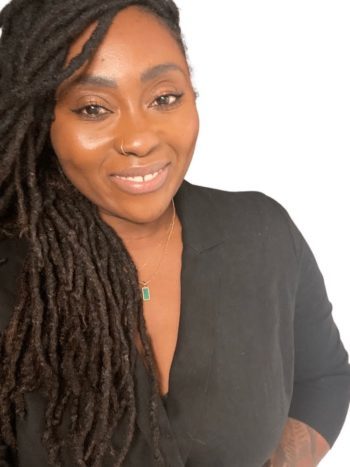
Finding ways to return to Africa – a photo essay on a Grenadian woman’s travels to the continent
By Kimalee Phillip
would
you still want to travel to
that
country
if
you could not take a camera with you.
– a question of appropriation
nayyirah waheed, Salt
When my dear friend expressed a desire to celebrate her 45th birthday in Senegal, I immediately said yes. I said it without hesitation not only because “muh foot hot” as we would say in Grenada (definition: to gallivant; to ‘lime’), but also because I had been meaning to visit Senegal for years. Here was an opportunity to make that desire real.
I left Toronto, Canada where I currently live and met Nana Darkoa Sekyiamah at her home in Accra, Ghana. If you haven’t already checked out Nana’s book, “The Sex Lives of African Women”, I would suggest you run to your nearest local bookstore or library to grab a copy – it’s an honest, exciting and informative look into the lives of real African women who courageously share their explorations on intimacy, sex and freedom.
I decided to meet Nana in Ghana because that would have given me a chance to meet and spend time with Nana’s daughter, who is also my goddaughter. Nana and I have had the privilege of traveling together in past years which left us convinced that we would make excellent travel buddies once again. I flew out of the Pearson International Airport on Christmas Day – post-winter storm – and arrived in sunny Accra on Boxing Day. The fact that my suitcases were still accepted 45 mins prior to my flight taking off continues to leave me baffled and deeply grateful.
My heart felt full as I arrived at the Kotoka International Airport, as I saw the smile of another dear friend who met me at the airport with his daughter, who I met on my first trip to Ghana back in 2012. We all hugged and made our way to Tema. Once we arrived, we feasted on delicious Grenadian rum cake made by my aunt in Montreal and used the time to make new connections and deepen already existing ones. The following day, we were off to Zaina Lodge in Tamale, northern Ghana where we went to decompress and connect with all of nature’s medicine.

My lovely and cozy room at Zaina Lodge in Mole National Park, Tamale, Ghana.

Where we had yummy Ghanaian food at Zaina Lodge, Mole National Park. Can you imagine how nourishing it felt to eat with this view and with the wind touching one’s skin. Divine!
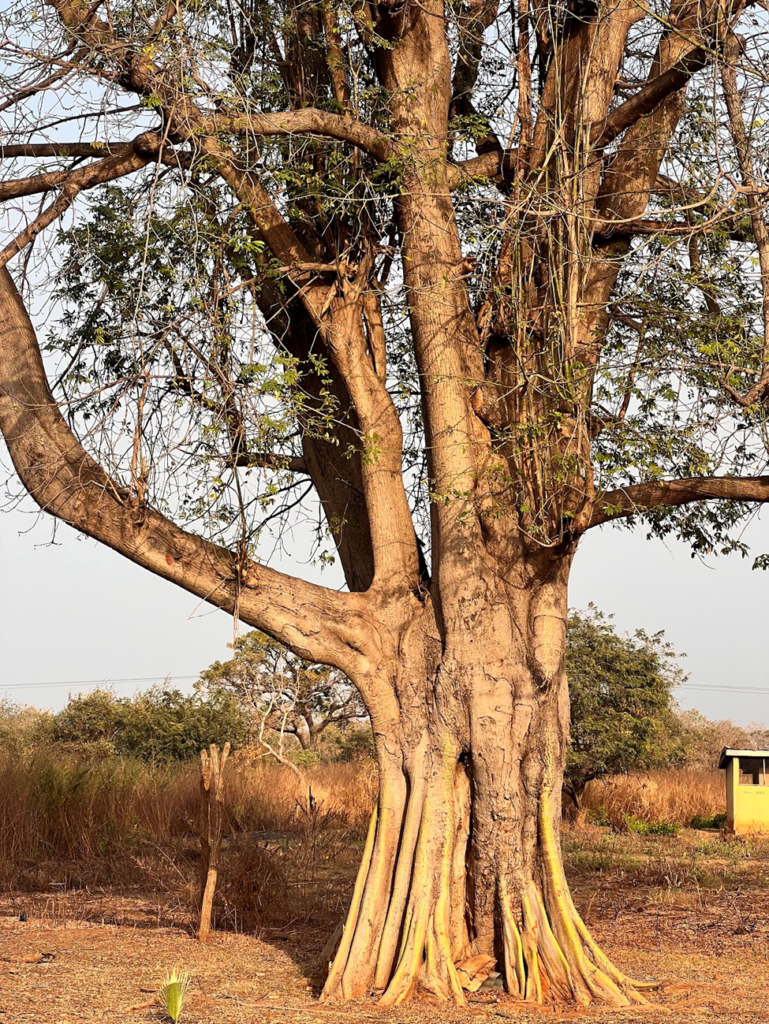
One of the benefits of staying at Zaina Lodge were the daily safaris that were part of our stay. I’ve had the privilege of experiencing safaris in Kenya and what was different about this one was that we got to learn a lot about the vast variety of plants that live in the park including this tree which caught my attention. It reminded me of our silk cotton trees in Grenada, trees that we believe are home to spirits and similar to the reverence offered to the baobab trees in Senegal, we will never cut one down. Our lives revolve around the tree, not the other way around.
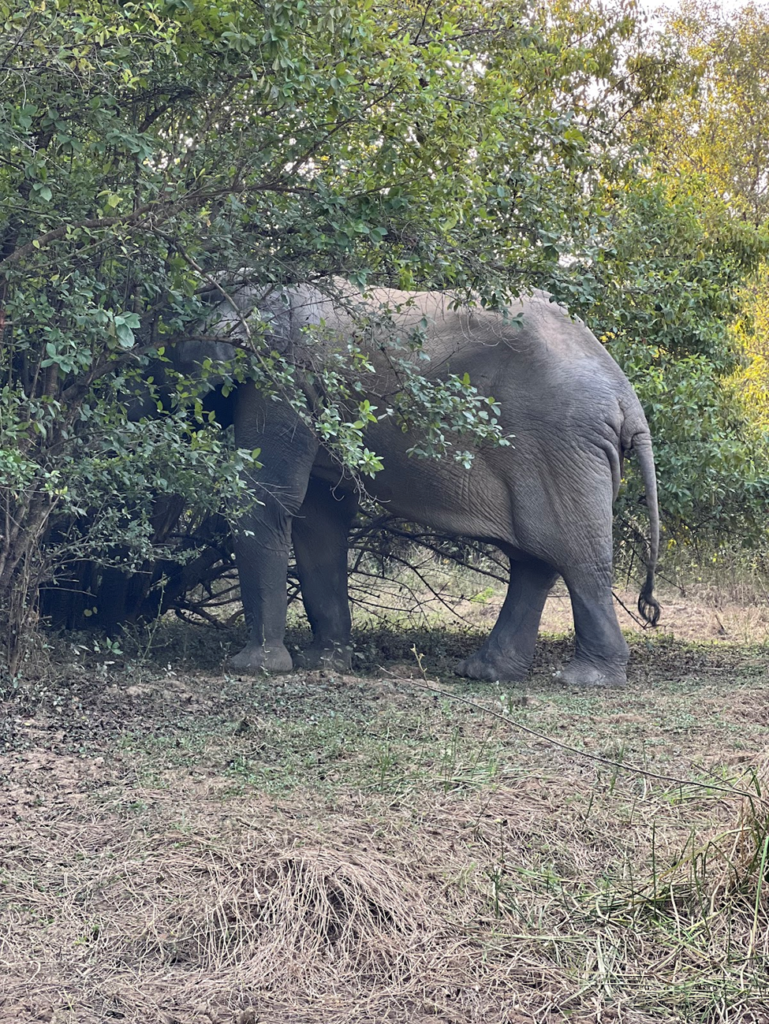
The absolute joy I felt when during our first safari in the Mole National Park, we came across this magnificent being. This massive male elephant stood about 10 feet away from myself and the guide. He paused, stared at us and when he decided that we were not a threat, he continued eating the leaves. The guide asked me if I could pick up on the smell of the elephant – this is how he knew the elephant was nearby, by its smell. To this day, I’m still trying to identify that smell of leaves and mud and I guess, elephant juju.
Our time in the Mole National Park was medicinal and healing for my spirit. After working an intensely busy year, I needed this break, this reprieve. I’m grateful to the staff at the lodge who were extremely warm and thoughtful and who because of them, I learnt about the Gonjas people of northern Ghana. To the many diverse birds, crocodiles, monkeys, warthogs, baboons, elephants and the very rare Hartebeest and Roan antelopes and to all the beings that accompanied us along this trip, I feel humbled and deeply grateful.
We wrapped up our time on the Gold Coast and then made our way to Senegal. First stop, Popenguine.
Our arrival at Senegal was eventful; from our flight with Air Cote d’Ivoire who gaslit us into thinking we were on time – we absolutely were not. To the unethical, border agent at the airport who swindled me out of $50 USD for a “free” visa. Despite it all, we were determined to enjoy our time in Senegal. We were picked up at the Blaise Diagne International Airport by our lovely driver, Abdou (note: the airport is named after someone who was born on Gorée Island and who seems to carry quite some controversy). We then made our way to Popenguine while I tried to release the anger I felt towards that crooked border agent officer.


We then arrived at our Air Bnb in Popenguine. This was the first view I saw, and I knew right then and there that we had made the right decision to begin our Senegal trip in this charming and beautiful village.
Popenguine has been described as a small village along the coast of Senegal, bordering the Atlantic Ocean and located about 70km from the capital, Dakar. I would personally describe Popenguine as a captivating, quaint, village where the warmth and power of the land and people quietly hums through the streets, carried on the backs of the backs, dreams and lives of the Lebou people and fortified by the volcanic magic that has helped to create that place. Popenguine – the place where connection and food supersede any desire to rush and get down to business. The getting down to business is in fact the time taken to check in with one another. I’m grateful for the teaching shared with me by the lovable Fathime, a Senegalese feminist whom I had the chance to virtually meet during my work at Association of Women’s Rights in Development (AWID). She shared with me that Popenguine is also protected by spiritual beings including Cupam (debatable spelling). When she told me this, it left me thinking that maybe the Black Madonna sightings seen by Catholics who continue to descend on the village during Easter was indeed Cupam.

The Popenguine Natural Reserve is 1,000 hectares of land including mangrove forests. Our guided tour helped us to understand the ongoing impact of the Popenguine Women’s Gathering for the Protection of Nature (RFPPN, its French acronym) who contribute to the conservation and restoration of the zone’s biodiversity. Our guide’s mother helped to found this important initiative.
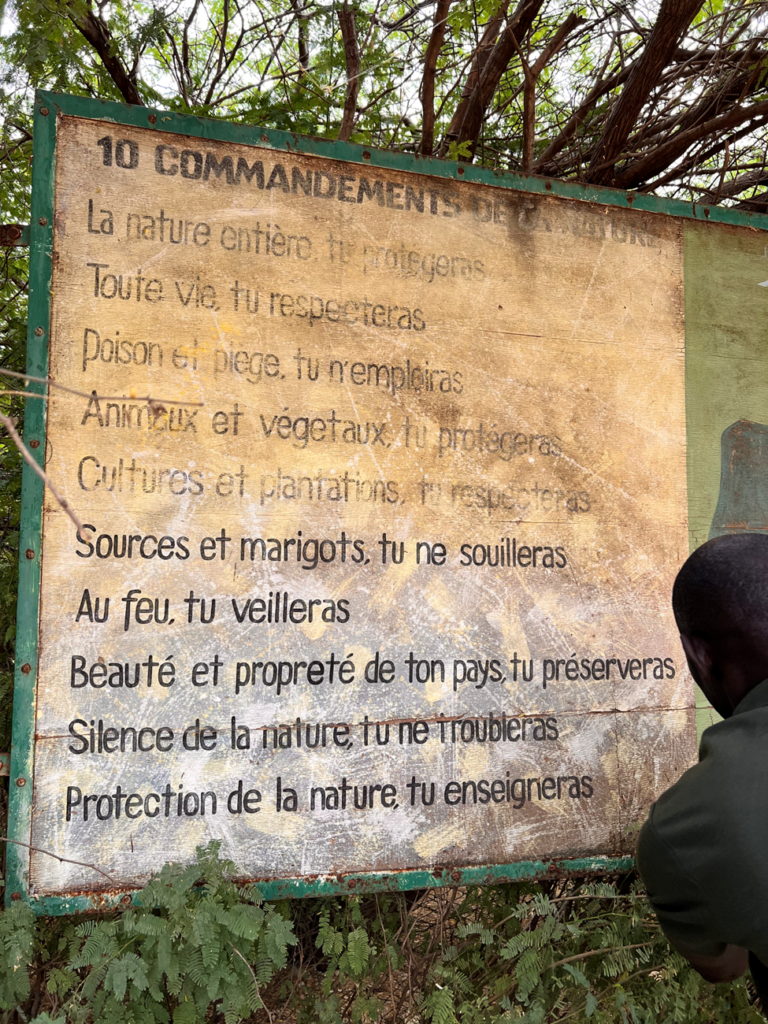
The ten commandments of the Popenguine Natural Reserve.

Me on our early morning hike through the Popenguine Natural Reserve. Photo credit: Nana Darkoa Seykiamah
The Lebou people of Senegal greeted us with such care and incredible feminists like Fathime and Coumba who ensured that we never felt alone were a large part of our trip. Nabou who cooked us nourishing and delicious meals and Badou who co-owns the Balafon ensured that we received our daily dose of rum arrange. The delectable ice cream by made by Ayesha Harruna Attah – a prolific Ghanaian writer who has made Popenguine home – and her team at Popenglace, the cutest ice-cream store I have ever seen (Ayesha is also a prolific and amazing writer) If you ever make it to Senegal, please make your way to Popenguine and treat it with the respect and love that it commands.
From Popenguine to Dakar we went about 7 days later after our arrival to Senegal. About 2 hours later, we arrived at our boutique hotel, Le Djoloff which was walking distance to the Soumbedione market. The following pictures capture some important places and moments from our trip in Dakar. I fell in love with the art, the people and it was constantly reminded about the multiple and sometimes conflicting experiences that we hold e.g. when one of our taxi drivers, a lovely older man, informed us that he had been driving since 7am (it was around 11pm at the time) because things are economically and politically hard for many Senegalese people.
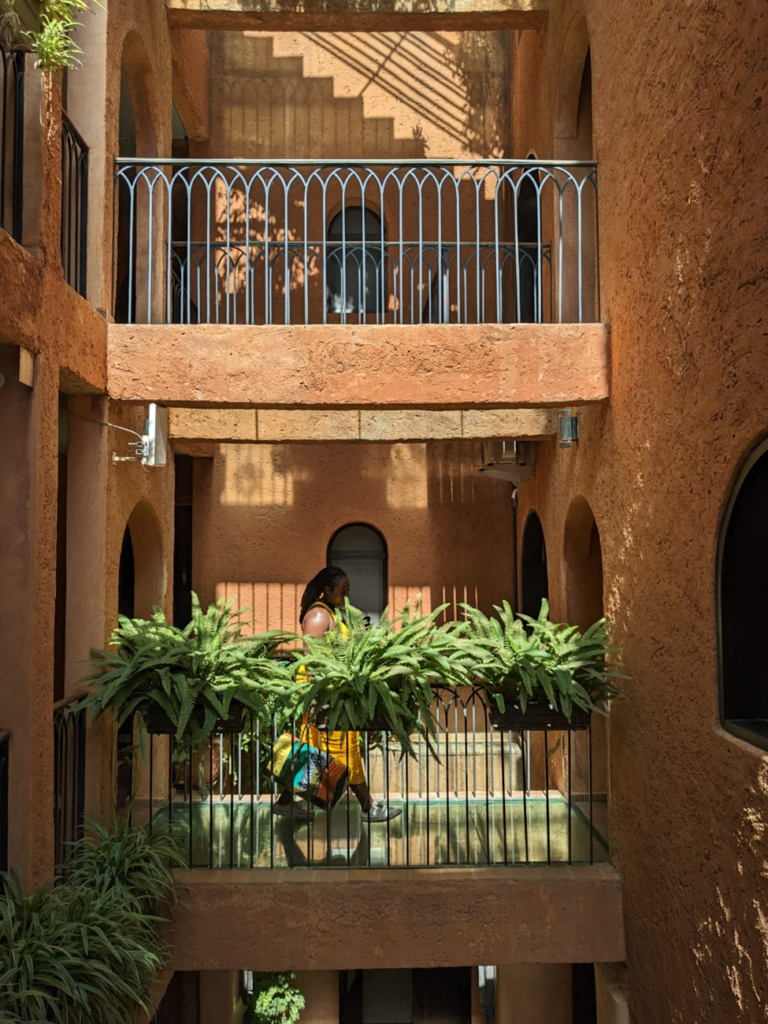
Me walking to my room at Le Djoloff Hotel. Photo credit: Soraya (one of the lovely friends I met while I on this trip)
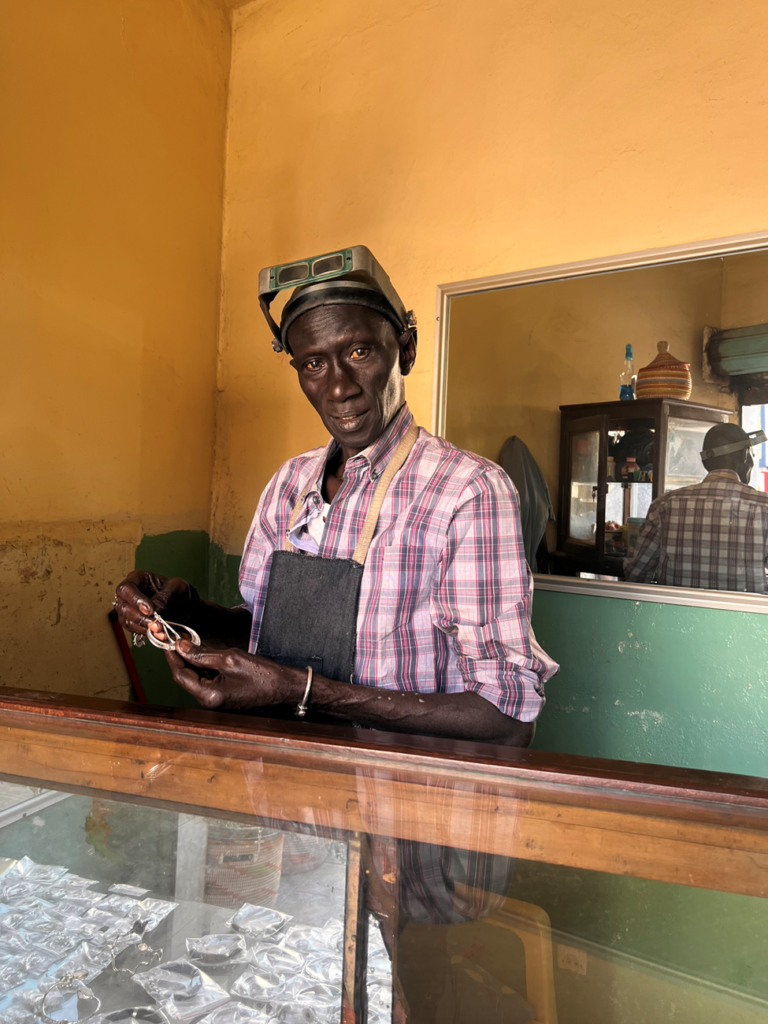
Monsieur Serigne Thiam who owns a jewelry store in the Soumbedione market. His beautiful dark skin reminded me of my maternal grandfather and his warm smile felt like home. I highly recommend you visiting his store for high quality silver and gold jewelry (ask to see the gold as it seems Senegalese people prefer silver). Right next to his store is an art store run by Moussa where you can purchase some affordable and beautiful pieces.

View of Dakar from the Renaissance Monument

Thanks to the assistance of a really helpful worker at the Port, we made our way to Gorée Island. The bright colours of the buildings on the island are in stark contrast to the dark history that makes this island one of the most popular tourist attractions for Senegal.

This monument was built to commemorate the millions of lives stolen, taken and disrupted by the Transatlantic Slave Trade, and was initially placed outside the House of Slaves. It was relocated around 2021 when Senegalese activists protested the naming of the square where it is currently located as the “Place of Europe” or “Europe Square”. I trust that the reasons for the protests are quite obvious, particularly given the location of the square. The activists were arrested, and the mayor of Gorée Island renamed the square, the Freedom and Human Dignity Square. Whether or not these brave activists have been able to experience dignity since then is unknown to me.

The grand baobab tree. Our excellent guide, Ali, informed us that before it was banned by the Senegalese government, that for years, griots would be buried in the trunks of baobab trees thus adding to the sacredness of these beings. In Senegal, it is considered bad luck to cut down a baobab tree and given the ways the wind helps to disperse their seeds, they can make themselves present anywhere. So, they build around the trees as opposed to having the trees accommodate to them.
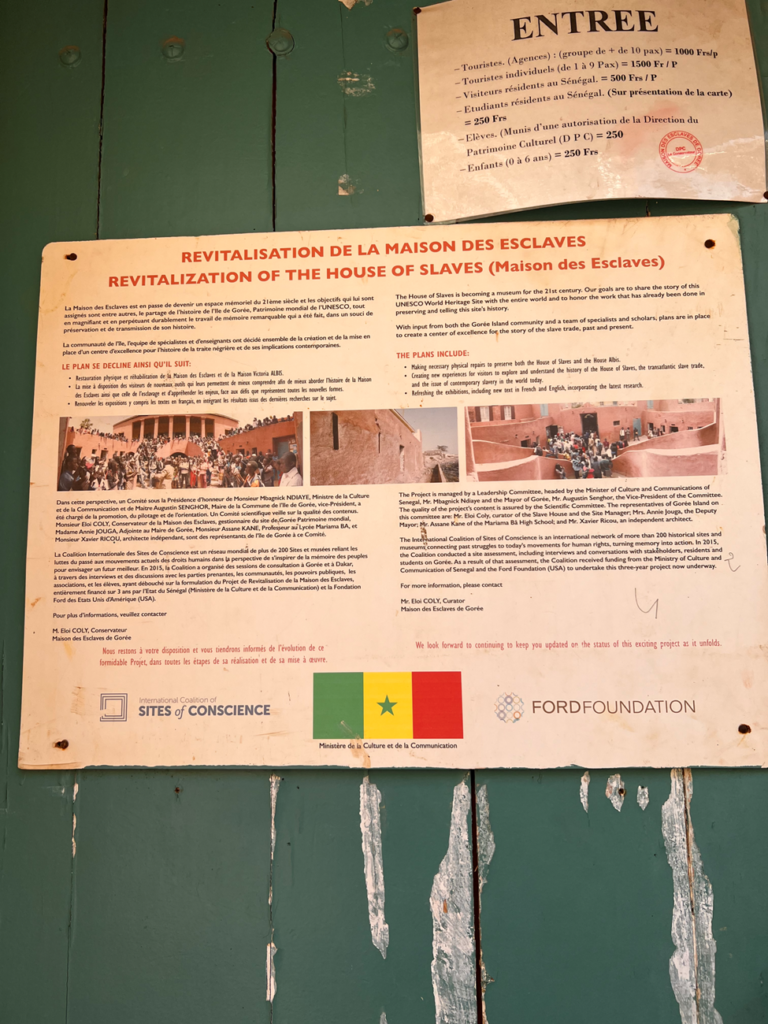
This sign is located at the entrance of the House of Slaves
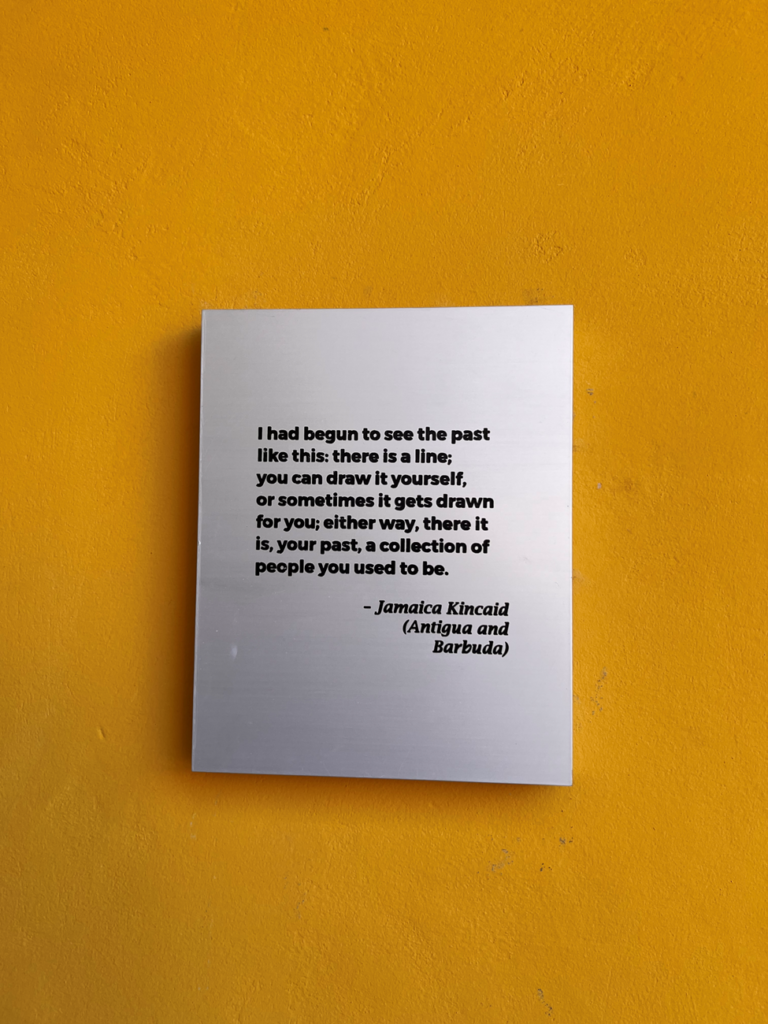
It felt heartwarming to see sprinklings of the diaspora at the site. I grew up reading Jamaica Kincaid in school in Grenada and her words echoed both hope and despair, taking me back to the book, “How to lose your mother” by Saadiya Hartman (highly recommend).

The Door of No Return.
As we made our way through the corridors and rooms at the House of Slaves, I thought of the poem, ‘a question of appropriation’ by nayyirah waheed which I used to open this photo essay.
would
you still want to travel to
that
country
if
you could not take a camera with you.
The constant traffic flow of tourists worsened by the insistent photo taking and holding up of actual shackles used to imprison my ancestors for a great shot, left my spirit feeling ungrounded and disheveled. Would they; would we, have travelled to this sacred place, made unsacred, if we could not carry a camera with us? How different would this experience have been like for us all, if we were able to sit, be present and truly feel the weight of the spirits present in that space – spirits who are probably still searching for home. It’s impossible to capture in words and even images, all of what this trip did and continues to do in my bones but for now, I offer this humble and tiny take into what it means for me to continue to return – sometimes never finding ground.
************************************************************************
Kimalee Phillip is a purposeful wanderer, intentional dreamer, wannabe DJ and dynamic facilitator who roots herself in her Grenadian and African lineages. Lineages that have been interrupted and informed by colonial violence, imperialism and ongoing acts of resistance as well as a collective audacity to self-determination and freedom. She is an experienced social justice and organizational learning consultant; a facilitator, writer, educator and researcher with over 15 years of experience. After working in the international feminist movement world for over 5 years at the Association for Women’s Rights in Development, she shifted her energies to consulting and organizing and now currently sits on the Board of Trustees with the Groundswell Community Justice Trust Fund, and is a facilitator with Bloom Consulting and the Toronto Jam team. She organizes with the Caribbean Solidarity Network, and works as a National Human Rights Representative with the Canadian Union of Public Employees (CUPE). She currently calls Toronto and more specifically, Scarborough home.

